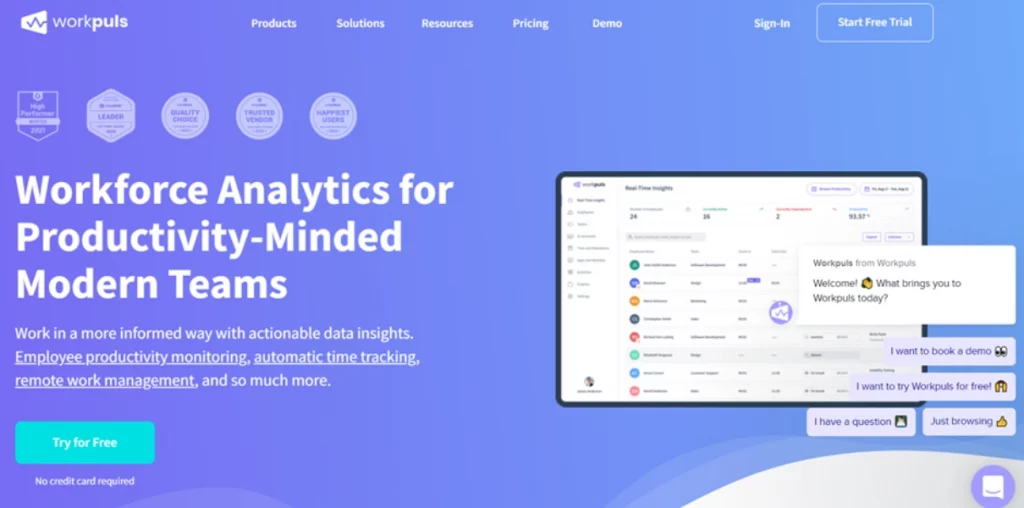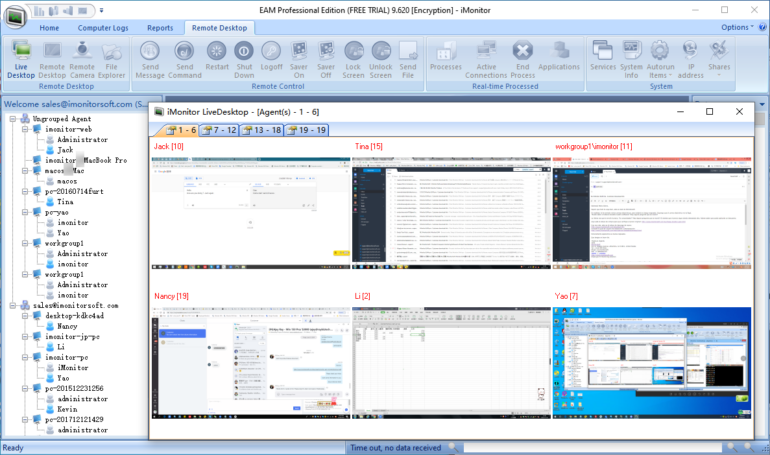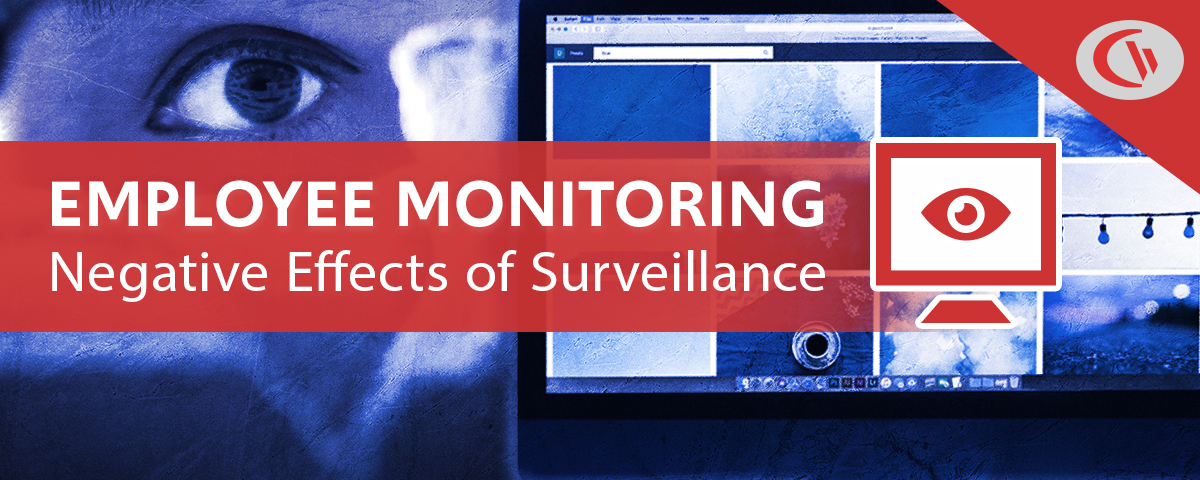The term "employee monitoring software" refers to the kind of software utilized by organizations to track and monitor the actions of their employees as they work. Employers are able to collect information about employees' behavior, such as keystrokes, internet usage and applications, screenshots and more. The software for monitoring employees has an primary objective to improve productivity of employees, as well as ensure that policies of the company are adhered to and protect confidential information and deal with any security issues. There are numerous aspects to think about when selecting an employee monitoring software. Take note of these crucial factors: Features. Find the features you need according to the needs of your company. Some of the most commonly used features include activity monitoring and website blocking. Other features include keystroke logging as well as tracking software including email monitoring, and report generation. Prioritize the features you want to use based on your goals for monitoring.
Compliance and Privacy. Make sure that your software complies with all applicable moral and legal guidelines. You should familiarize yourself with all applicable laws in your region. For example, data protection laws and privacy laws. Software that respects employee privacy should have transparent and configurable settings.
User-Friendliness: Think about the software's usability and accessibility. The time will be reduced and the setup process streamlined if you have a simple interface and setup process. Find customizable dashboards and reporting tools that allow you to easily navigate and interpret the collected data.
Integration and Compatibility - Make sure your application will integrate seamlessly with the IT infrastructure you have and any systems you are employing, such as email clients collaborative platforms, project management tools and operating systems. Compatibility ensures seamless monitoring without affecting day-today operations.
Data Security- Examine the software's security features to ensure the security of data. Secure data storage, encryption, access controls, and the use of industry-standard security protocols are essential. Verify the software's security practices.
Scalability- You should think about the software's capacity to grow with the growing needs of your company. If you are planning to increase your staff or establish new locations in the near future select a software program which is easily expanded to meet the changing requirements.
Analytics and Reporting- Evaluate the capabilities to report on the software. Features that offer comprehensive insight into the productivity of employees, their time management, and other trends are important to look for. Customizable reports and analytics assist you in making educated decisions and identify areas for improvement.
Customer Support - Evaluate the quality and accessibility of customer support offered by software providers. Assess their availability, responsiveness and level of technical support. A professional customer support staff can provide quick assistance for any issues that may occur.
Cost - Consider the pricing model that you are using, for example, an annual fee or a subscription depending on usage. Know the pricing structure, including any added costs for support upgrades and other features. Try to balance the price of your product with its features and value.
Transparency and Communication between employees - Establish clear communication and transparency to your employees regarding the use and implementation of monitoring software. Transparently communicate the purpose, scope of work, and expectations in relation to the monitoring. Discuss any concerns, and ensure they understand that their privacy will still be respected.
It is possible to make a more informed decision by weighing these aspects and deciding on the employee monitoring program that meets your needs, while also respecting the privacy of your employees and meeting legal regulations. Take a look at the top rated time tracking monitoring software for site recommendations.

What Features Are Included In The Employee Monitoring Software And What Are The Differences Between Them?
Software for employee monitoring offers numerous features that can be utilized to track and analyze the behavior of employees. Employee monitoring software may have various options. Here are some most commonly used features. Activity Monitoring The feature tracks and records all activities of employees including sites visited, the programs that are used, the files downloaded as well as the amount of time spent. It gives a comprehensive overview of what employees do during their work hours.
Keystroke Logging- Keystroke logging records every keystroke typed by employees. It is a great tool to detect productivity bottlenecks and uncover illegal activities.
Screenshots, and screen recordingsScreenshots, and screen recordings - Certain applications take screenshots of the employee's computer screen at predetermined intervals. Other applications record their screen in real-time. This feature helps monitor productivity, ensure that compliance is maintained, and help to resolve issues.
Internet Usage Tracking: This feature tracks employee's online activities such as websites visited and search queries, and downloads of files. It assists in identifying excessive non-work-related internet browsing, security threats, or policy violations.
This feature lets you keep track of the applications employees are using while working. It can help identify inappropriate or excessive usage of applications by providing information about the applications that are used most often.
Email Monitoring - Monitoring email allows employers the ability to monitor employee emails including sent and receive messages, attachments and email content. It assists in ensuring compliance with company policies to prevent data leaks and investigate any suspicious activities.
Document and File Tracking - This function tracks access to files and changes in the file. It can help protect sensitive information, monitor document collaborative work, and ensure compliance to privacy policies for data security.
Remote Monitoring - Employers can track employees working remotely or in different places. It lets employers monitor their activities and ensure efficiency regardless of physical location.
Productivity Analysis. Programs for monitoring employees typically include features for productivity analysis that offer insight into employee work patterns and levels of productivity. These analyses can help to identify areas of improvement and help to optimize workflow.
Reporting and Analytics- Robust analytics and reporting tools generate detailed reports and visualizations using the data collected. These reports provide valuable insights into the performance of employees as well as resource allocation and time management.
Software that provides features for compliance and policy management can help ensure that an organization's guidelines and policies are followed. They enable employers to define guidelines for acceptable usage of computers as well as internet connection.
Alerts and notifications - Alerts or notifications inform managers or employers about specific events or actions. For instance, they could alert about excessive Internet usage or attempts to access restricted websites, or other unsettling behaviour.
You should be aware that different employee monitoring solutions can have a variety of functions and features. Consider features that will assist you in reaching your goals for monitoring and that also meet the legal and ethical standards in your area of operation. Read the best employee monitoring software for more info.

What Is The Law Of Compliance And Privacy For Employee Monitoring Software?
Compliance and privacy laws are crucial to the use of employee monitoring software. Although the exact legal requirements will differ by state, here are some common ways in which employee monitoring software is in compliance with compliance and privacy laws- Consent and Notice- Many jurisdictions require that employees provide an informed consent and are given prior notice of any monitoring activity. Monitoring software for employees typically includes options that permit employers to clearly communicate their monitoring policy to employees. This may involve providing written notices, obtaining consent through consent forms or implementing an employee handbook which outlines the procedures for monitoring.
Transparent Monitoring Policies: Employee monitoring software helps promote transparency by making sure employees know the specific types of data being collected, the purpose of monitoring, as well as the scope of monitoring activities. Clear and comprehensive policies aid employees in understanding the limits of monitoring as well as their rights in relation to privacy.
Data Minimization- To comply with privacy laws Employee monitoring software typically uses data minimization techniques. This means only required data is kept and stored. Data that is irrelevant or overly large are eliminated. The software encourages compliance by limiting the data that is collected to what is necessary for monitoring.
Some employee surveillance software is able to anonymize or aggregate information to ensure the privacy of employees. Anonymization erases personal identifiable information (PII), making it impossible for data to be associated to a particular person. The aggregated data is a mix of several employees' information to gather insights at the general level, without the need to identify particular individuals.
Secure Storage of Data and EncryptionEmployee monitoring software is a key component of the safety of data it collects. Data is protected by secure data-storage practices and encryption methods. This includes protecting data in transit and at rest.
Access Controls with Restricted Rights- In order to ensure compliance, the majority of employee monitoring programs include access controls and restricted rights. Employers can restrict access to the monitoring information only to those who require it for legitimate reasons, such as HR personnel or administrators.
Rights and Remedies for Employees Rights & Remedies The protection of the rights of employees is vital in ensuring compliance with privacy and compliance laws. Monitoring software for employees often has features that enable employees to access their own monitoring information, make corrections or to file complaints. This software allows employees to claim their rights and pursue remedies in cases of privacy violations.
Compliance to Data Protection Regulations - Employee monitoring software is developed to comply to data protection laws like the General Data Protection Regulation in the European Union (GDPR) or the California Consumer Privacy Act in the United States (CCPA). Compliance is achieved by implementing suitable measures to protect personal data, respecting data subjects rights, and making sure that the use of data is legal. data.
It is important to remember that while software for monitoring employees can aid in compliance efforts, businesses must also consult legal professionals and stay updated on the relevant laws and regulations within their area of responsibility. To comply with the privacy and compliance laws, a comprehensive approach is required that goes far beyond software. It should include specific policies and education for employees, as well as ongoing compliance monitoring. Follow the top rated time tracking monitoring service company for site advice.
